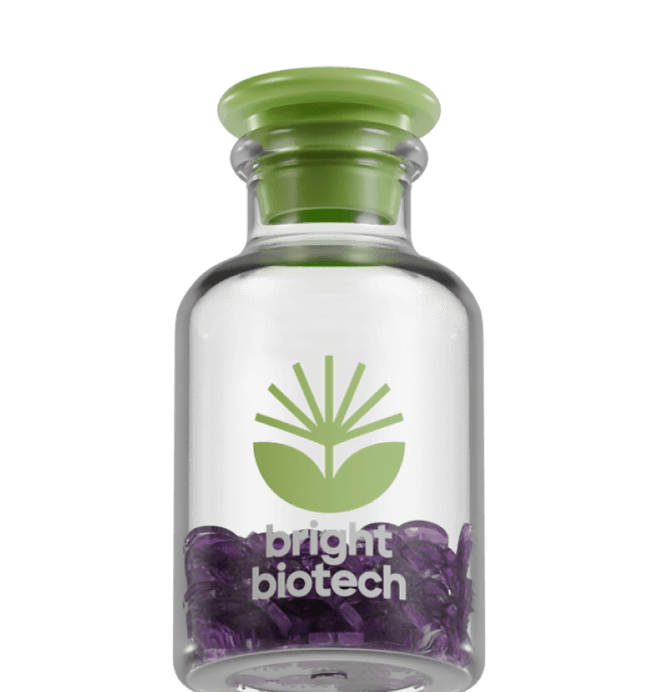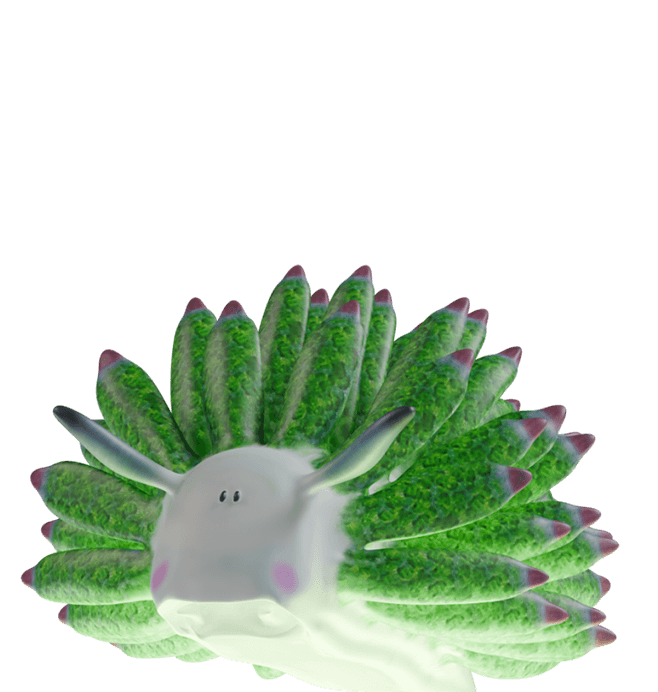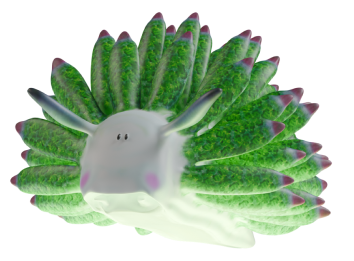Unlocking the Future of Meat Production


Reducing our reliance on animal agriculture is a key challenge in the pursuit of a more sustainable world, one that can support and feed a growing population. There have been many alternative products explored, but one truth remains the same: people like eating meat.
Cultivated meat, although not without its challenges, offers a way to produce meat, without the animal. Sounds too good to be true? It’s complicated! The technology has advanced significantly in the last 10 years, but is not yet ready for commercial scale. Important technological and economic barriers will need to be solved.
At Bright Biotech, we are one part of the puzzle. By providing animal-free, scalable, and cost-effective growth factors, a key cost driver of producing cultivated meat products, we hope to enable this industry to change the world.
Cultivated meat is an alternative way of producing meat
Cultivated meat, also known as lab-grown or cell-based meat, replicates animal-sourced meat at the cellular level, allowing us to enjoy a Sunday roast free of the animal welfare or environmental concerns associated with livestock farming. This alternative method of producing meat removes the need to slaughter animals and instead animal cells are grown in large containers under precisely controlled conditions. The cells are then collected and used to make products like the minced beef or chicken fillets you find in the supermarket today.

Reducing our reliance on traditional animal agriculture has many potential benefits
Replacing even a small portion of animal-sourced meat provides a pathway to drastically lower environmental impacts. Animal agriculture contributes almost 15% of global greenhouse gas emissions globally, the majority produced from cattle. Further benefits include reducing the land and water required for animal agriculture, estimated to require 30% of the habitable surface of the earth and 70% of the annual freshwater available. These impacts are only expected to rise as population increases.
“Without changing food systems, we’ll likely miss the 1.5°C target [of the Paris Agreement] in 30 to 45 years and the 2°C target within 100, even if we immediately stop all other sources of emissions.”
– Dr Michael Clark, a researcher of the environmental impact of food at the University of Oxford, when speaking to The Independent.
Alongside environmental issues, 60% of all disease in humans are transmitted from animals. Approximately 30% of these so-called zoonotic diseases originate from livestock. Prime examples of zoonotic diseases include Bird flu and SARS-CoV2 (COVID-19). Reducing livestock could not only decrease the frequency of zoonotic transmission, helping prevent millions of deaths, but also reduce the emergence of antibiotic-resistant diseases, resulting from the overuse of antibiotics in livestock farming.
There are multiple alternatives to animal-sourced meat
There are three main alternatives to animal meat: protein products based on plants, fermentation or cultivated meat. In some instances, plants are combined with fermentation to make a protein product. Each of these products aims to do the same thing – replace a portion of animal-sourced meat with alternatives.
Plant-based products are the main form of alternative protein sold and consumed globally. While these products have been around for decades – starting in the 1980s with the emergence of several plant-based companies like Tofurkey – the industry began to see significant growth in the late 2010s. Companies such as Beyond Meat and Impossible Food garnered significant attention and alternative proteins began to be accepted by large industry players such as fast food chains (e.g., Burger King, TGI Fridays UK), food corporates (e.g., Nestle, Kraft Heinz), and even traditional meat companies (e.g., Tyson Foods). Investment peaked in 2020 with $2B and 2021 with $2.5B. However early success was followed by consumer dissatisfaction – in 2023 as part of the UK Smart Protein Consumer Report, 37% of respondents said taste is a key reason to avoid plant-based meat products and 43% report price as a key barrier. In the years following on from 2021, unit sales have declined. One thing is clear: the search is on for better alternatives.

Fermentation is another alternative, often combined with plant-based products to create products. There are two key types of fermentation: biomass fermentation that can be used to produce protein in the form of microbial biomass at scale (e.g., Quorn) and precision fermentation which uses microbes to produce specific proteins, such as heme protein (e.g. Impossible Foods). Fermentation can produce taste and texture much closer to animal-based meat. However, there is some consumer hesitancy to the technology with lower familiarity and comfort with the technology than plant-based products. The fermentation market has followed a similar path to plant-based, with investment peaking in 2021.
Cultivated meat offers the best opportunity to meet the taste and texture of traditional meat, as it is identical at a cellular level, but faces technological and economic barriers. Currently, cultivated meat products are only available in very small quantities in the US and Singapore, and the industry is still largely at small-scale production. Even while consumption is nearly non-existent, the industry has already faced backlash with controversial bans from US states Alabama and Florida along with the first countrywide ban in Italy. These responses indicate that, in addition to the technical challenges of producing cultivated meat at scale, consumer acceptance may be an additional barrier. However, even so, the ability to produce meat that is an exact, or even improved, replacement to traditional meat may offer the best chance of reducing reliance on animal agriculture.
Progress in the cultivated meat market
Similar to plant-based and fermentation technologies, the cultivated meat industry has experienced a ‘boom and bust’ investment cycle. Investment peaked in 2022 with $922M raised, falling to $225M in 2023 as early companies missed key milestones.
Even as market expectations have adjusted, the technology continues to improve with recent breakthroughs. In 2023, ten new cultivated meat facilities opened from lab scale to commercial scale and a further seven were announced. Cultivated meat companies have achieved approval in Singapore in 2020, the US in 2023, and Israel in 2024. The UK approved cultivated meat for use in pet food in 2024. The new startups have been able to reach key milestones with less funding, illustrating progress in the market. Achieving commercial scale is the next step with longer timelines than originally anticipated.
Cultivated meat faces uncertain timelines to commercial scale
The cell culture technology underlying cultivated meat stems from the pharmaceutical industry, which was developed with emphasis on producing clinical breakthroughs rather than low-cost products. Therefore, applying cell culture technology to the food industry poses a natural challenge to reaching scale and price parity to animal-sourced meat. A 2022 review suggested that a kilogram of cultivated meat may cost around $63 before supermarket markup, putting a quarter-pounder burger at $18, though price estimates continue to change as advances are made.

Five main challenges are widely cited in cultivated meat: 1) cell culture media costs, 2) optimisation of cells, 3) bioprocess design, 4) cell scaffolding complexities, and 5) product finalisation and consumer appeal. The price of cell culture media is considered a major bottleneck, estimated to contribute 55-95% of marginal cost of the product, with 99% of that cost attributable to growth factors. Growth factors are the main focus of our company, Bright Biotech, with our technology aiming to overcome this key pain point.
The challenge of growth factors
Growth factors, proteins which stimulate the growth and development of cells, are typically obtained from animal sources in the form of Fetal Bovine Serum (FBS) or produced by precision fermentation where microbes generate growth factors in bioreactors. FBS is low cost, but poses problems around consistency and is animal-sourced, contradicting with the mission of cultivated meat to replace animals. Growth factors are difficult to produce through microbial fermentation, with low yields and expensive bioreactors, resulting in their high cost and low supply.
There are multiple approaches to reduce the bottleneck of growth factor supply. Several companies have produced technologies to avoid using growth factors such as gene editing cell lines to produce their own growth factors. Many companies recycle cell culture media to reduce the amount of growth factors needed. However, cultivated meat companies still widely report that sourcing a plentiful supply of growth factors is a challenge, particularly as they move towards large production scales.
Using plants to make growth factors (molecular farming)
There are a number of startups exploring the use of molecular farming to manufacture growth factors. The great benefit of molecular farming over fermentation is that, because the protein production takes place in plants, the production system is considerably lower cost. However, many molecular farming systems struggle with the regulatory challenges from growing genetically modified plants in open fields and the relatively low yields that make it difficult to scale up.

At Bright Biotech, we are the only company producing growth factors in a chloroplast expression system. As opposed to other molecular farming systems (transient and nuclear expression), the DNA of the growth factor is inserted into the chloroplast of a plant cell. Our chloroplast expression technology has three key advantages for growth factor production:
-High yield: The high copy number of chloroplast DNA in plant cells (up to 10,000 copies per cell) results in consistently elevated levels of protein expression throughout the growth period with a yield of 2-5g of protein per kg of leaf biomass.
-Stability: Chloroplasts lack gene silencing and epigenetic changes that destabilise nuclear expression systems, enhancing reliability of yield over many generations.
-Containment: Chloroplast DNA is maternally inherited, meaning it does not spread through pollen. This considerably reduces the risk of chloroplasts with growth factors being transmitted to other crops by cross-pollination. By harvesting the leaves before flowering, the dispersal of seeds is also prevented, adding an extra layer of containment. This containment potentially allows for open field cultivation, further reducing production costs.
We produce growth factors that are high activity, high purity (>95%), animal-free, endotoxin-free, and tag-free. Our production system is well-suited to overcome the costs, regulatory, and safety considerations of the cultivated meat space. While there are several challenges facing the cultivated meat space, we have overcome a key bottleneck by being able to provide a plentiful supply of affordable, high quality, and animal-free growth factors








